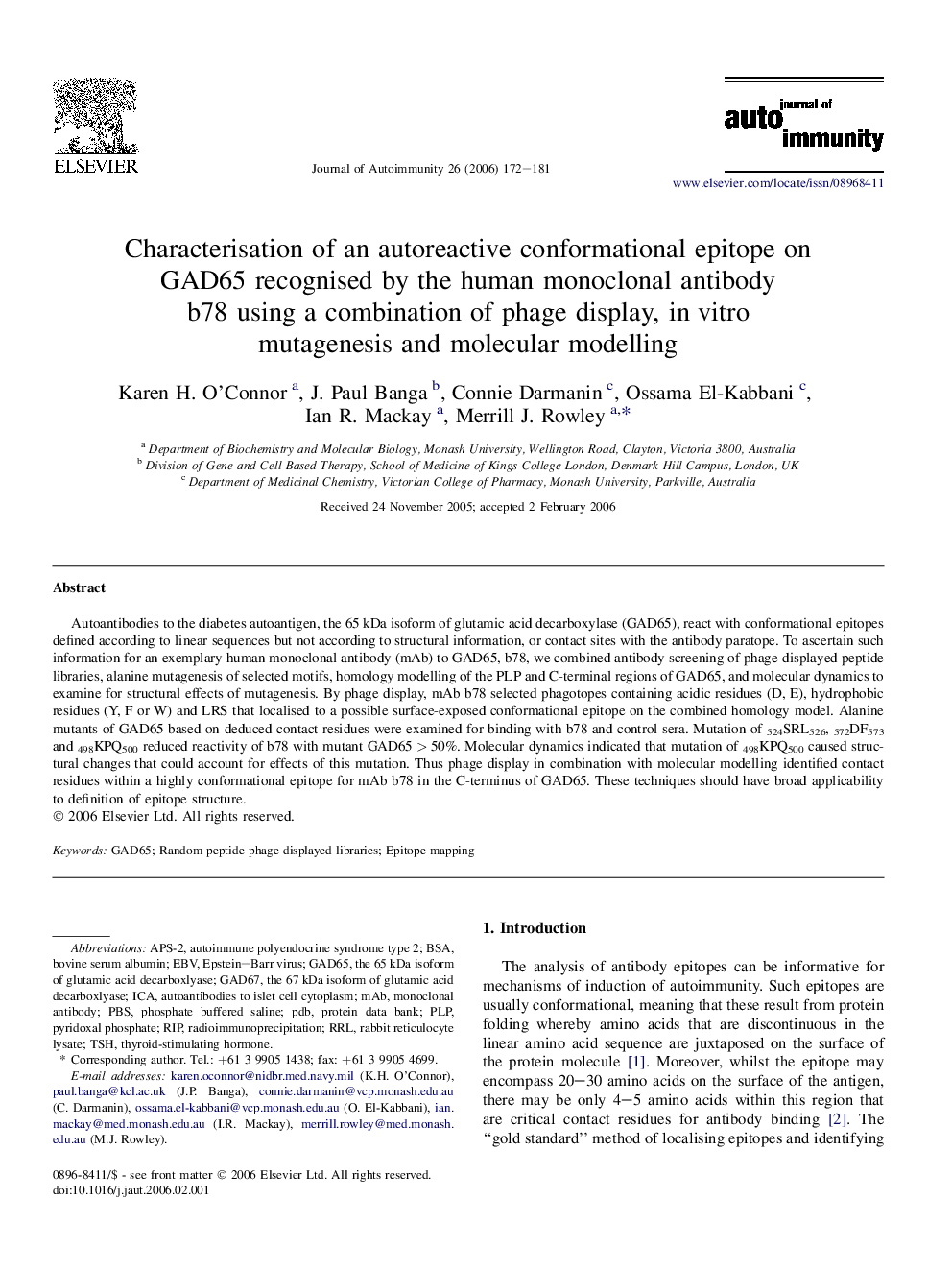| Article ID | Journal | Published Year | Pages | File Type |
|---|---|---|---|---|
| 3368530 | Journal of Autoimmunity | 2006 | 10 Pages |
Autoantibodies to the diabetes autoantigen, the 65 kDa isoform of glutamic acid decarboxylase (GAD65), react with conformational epitopes defined according to linear sequences but not according to structural information, or contact sites with the antibody paratope. To ascertain such information for an exemplary human monoclonal antibody (mAb) to GAD65, b78, we combined antibody screening of phage-displayed peptide libraries, alanine mutagenesis of selected motifs, homology modelling of the PLP and C-terminal regions of GAD65, and molecular dynamics to examine for structural effects of mutagenesis. By phage display, mAb b78 selected phagotopes containing acidic residues (D, E), hydrophobic residues (Y, F or W) and LRS that localised to a possible surface-exposed conformational epitope on the combined homology model. Alanine mutants of GAD65 based on deduced contact residues were examined for binding with b78 and control sera. Mutation of 524SRL526, 572DF573 and 498KPQ500 reduced reactivity of b78 with mutant GAD65 > 50%. Molecular dynamics indicated that mutation of 498KPQ500 caused structural changes that could account for effects of this mutation. Thus phage display in combination with molecular modelling identified contact residues within a highly conformational epitope for mAb b78 in the C-terminus of GAD65. These techniques should have broad applicability to definition of epitope structure.
